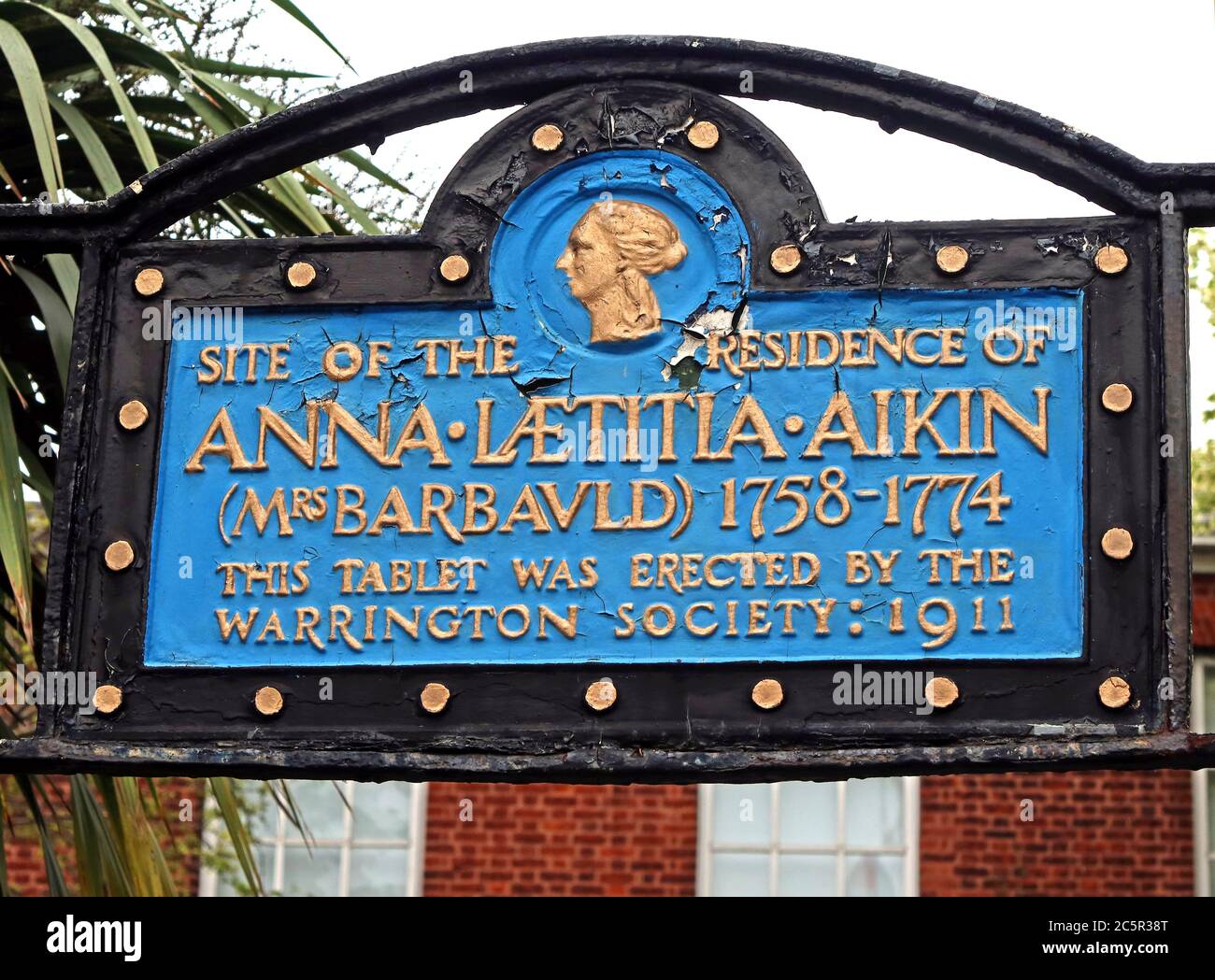Site of the residence of Anna Laetitla Aikin,Mrs barbauld,1758,1774,tablet erected by the Warrington Society,1911

Image details
Contributor:
Tony Smith / Alamy Stock PhotoImage ID:
2C5R38TFile size:
43.4 MB (1.8 MB Compressed download)Releases:
Model - no | Property - noDo I need a release?Dimensions:
4536 x 3348 px | 38.4 x 28.3 cm | 15.1 x 11.2 inches | 300dpiDate taken:
4 July 2020Location:
6 Dial St, Warrington, Cheshire, England, UK, WA1 2NXMore information:
Anna Laetitia Barbauld née Aikin; 20 June 1743 – 9 March 1825[1]) was a prominent English poet, essayist, literary critic, editor, and author of children's literature. A "woman of letters" who published in multiple genres, Barbauld had a successful writing career at a time when women rarely wrote professionally. She was a noted teacher at the Palgrave Academy and an innovative writer of works for children; her primers provided a model for more than a century. Her essays showed it was possible for a woman to be publicly engaged in politics; other women authors such as Elizabeth Benger emulated her.Barbauld's literary career spanned numerous periods in British literary history: her work promoted the values of the Enlightenment and of sensibility, while her poetry made a founding contribution to the development of British Romanticism.[4] Barbauld was also a literary critic. Her anthology of 18th-century novels helped to establish the canon as it is known today. Barbauld's career as a poet ended abruptly in 1812, with the publication of Eighteen Hundred and Eleven, which criticised Britain's participation in the Napoleonic Wars. She was shocked by the vicious reviews it received and published nothing else in her lifetime. Her reputation was further damaged when many of the Romantic poets she had inspired in the heyday of the French Revolution turned against her in their later, more conservative years. Barbauld was remembered only as a pedantic children's writer in the 19th century, and largely forgotten in the 20th, until the rise of feminist literary criticism in the 1980s renewed interest in her works and restored her place in literary history